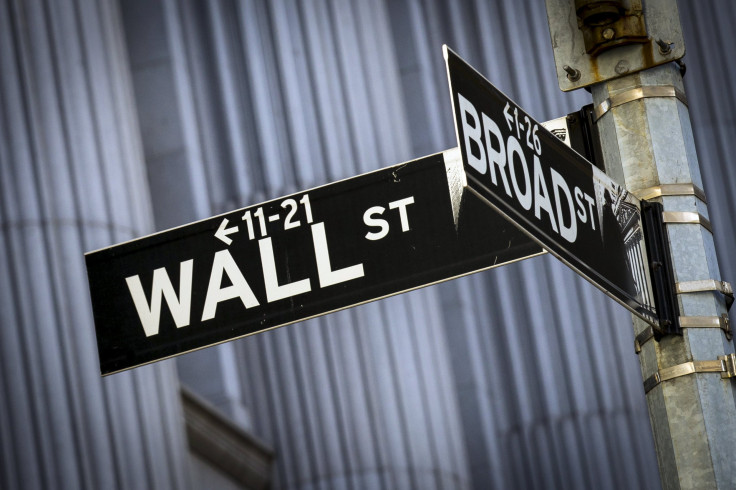Dow Jones Industrial Average Tumbles 100 Points As US Dollar Strength Weighs On Oil, Earnings

U.S. stocks closed lower for a second straight session Tuesday, with the Dow Jones Industrial Average tumbling more than 100 points in late afternoon trading as renewed strength in the dollar weighed on investor sentiment ahead of earnings season. The U.S. dollar index, which measures the value of the greenback against a basket of major currencies, edged up more than 0.2 percent to $97.15 after dipping more than 1 percent a day earlier.
The euro held steady at $1.09 against the greenback as investors continue to weigh ongoing Greek debt negotiations in Berlin.
The Dow (INDEXDJX:.DJI), which measures the share prices of 30 large industrial companies, dropped 104.90 points, or 0.58 percent, to close at 18,011.14. The Standard & Poor's 500 (INDEXNASDAQ:.IXIC) lost 12.92 points, or 0.61 percent, to end at 2,091.50. The Nasdaq composite (INDEXSP:.INX) fell 16.25 points, or 0.32 percent, to finish at 4,994.73.
Investors fear continued strength in the dollar will slow U.S. earnings growth. A prolonged period of dollar strengthening would hurt U.S. multinational corporations once they convert foreign revenue to dollars as nearly half of the S&P 500’s revenues are derived from overseas.
Global commodity prices such as oil are usually quoted in dollars and are likely to fall when the greenback is strong. Crude oil dipped to less than $56 a barrel Monday amid signs of slowing factory activity in China while oil production in Saudi Arabia neared a record high. Brent crude, the benchmark for global oil prices, lost 1.5 percent to close at $55.15 a barrel, for May 15 delivery on the London ICE Futures Exchange. West Texas Intermediate crude, the benchmark for U.S. oil prices, added 6 cents to close at $47.51 a barrel for May 15 delivery on the New York Mercantile Exchange.
U.S. stocks initially edged higher in early trading Tuesday after data showed investors cheered by stronger-than-expected housing data, with the Nasdaq composite and S&P 500 indexes edging closer to all-time highs in morning trading. The Consumer Price Index, which measures the average prices of consumer goods and services, such as transportation, food and medical care, rose 0.2 percent last month, in line with forecasts, after dropping 0.7 percent in January, the Labor Department said Tuesday.
The rebound snapped three straight months of declines after CPI, one of the measures the U.S. Federal Reserve uses to gauge inflation, posted its largest drop since 2008 in January, weighed down by the precipitous drop in gasoline prices. However, the rebound in U.S. consumer prices in February signals inflation ticked up after gasoline prices across America rose for the first time since June.
The average cost of gasoline per gallon in the U.S. has dropped to an average of $2.42 from an average of $3.52 last year, GasBuddy.com reported. However, average prices at the pump have ticked up 11 cents from a month ago.
Muted inflation has given U.S. Federal Reserve officials room to pause as they debate when to hike interest rates this year, but some market professionals expect the central bank to raise interest rates in late summer, or early fall. “In this environment, we see the Fed raising rates in September. We do, however, acknowledge that a renewed oil price plunge, or a weak wage growth failing to support domestic activity could weigh on inflation and delay the lift-off decision,” Gregory Daco, head of U.S. macroeconomics at Oxford Economics, said in a research note Tuesday.
Separately, new U.S. home sales soared in February to the highest level in seven years as sales of new single family homes rose 7.8 percent to a seasonally adjusted annual rate of 539,000 units, the Commerce Department said Tuesday. Meanwhile, U.S. Manufacturing hit a five-month high in March after new orders increase at fastest pace in five months, driven by improving economic conditions and positive overall spending patterns among clients, global financial information and services company Markit said Tuesday. The firm’s U.S. Manufacturing Purchasing Managers’ Index ticked up to 55.3 in March, up from 55.1 in February. A reading of less than 50 indicates contraction.
© Copyright IBTimes 2024. All rights reserved.




















